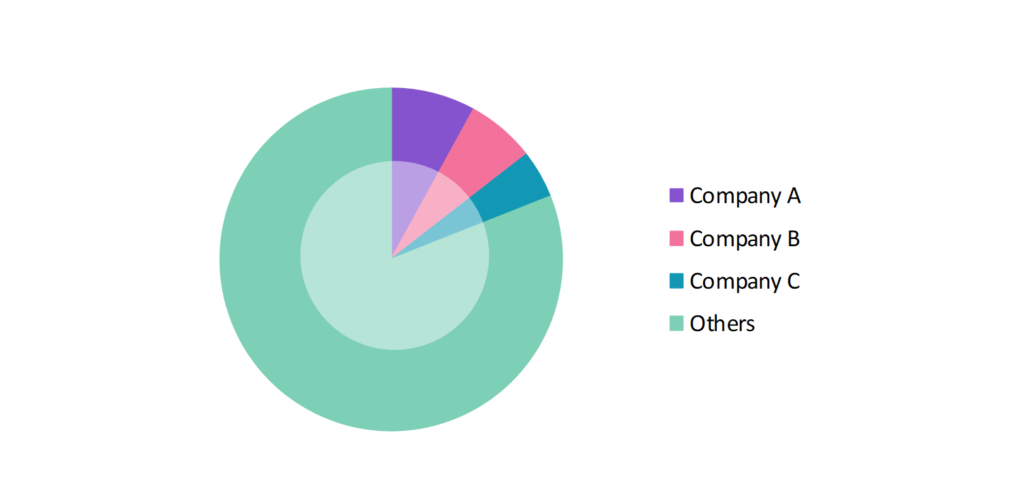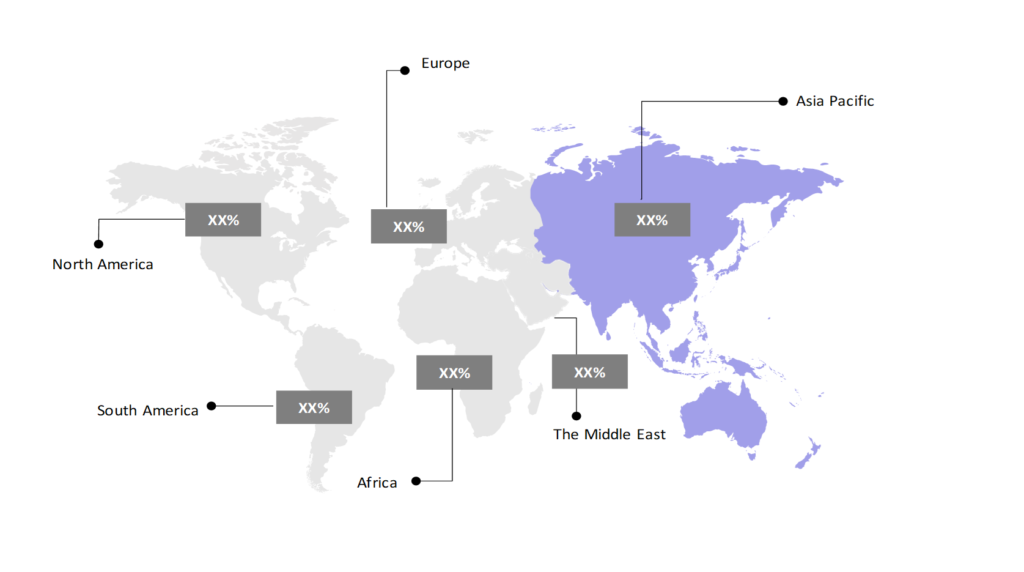AI Supercomputers Market Insights: Size, Share, Growth Analysis & Forecast (2024-2029)
The market report presents a thorough analysis segmented by Component (Processors/Computers, Storage, Memory, Interconnects); by Application (Government, Academia and Research, Commercial); by Geography (North America, South America, Asia Pacific, Europe, The Middle East, Africa).
Outlook

- The AI supercomputers market is estimated to be at USD 1,910.03 Mn in 2024 and is anticipated to reach USD 4,110.19 Mn in 2029.
- The AI supercomputers market is registering a CAGR of 16.56% during the forecast period of 2024-2029.
- The artificial intelligence (AI) supercomputer market is expanding rapidly due to the increasing demand for high-performance computing (HPC) in AI-driven applications such as deep learning, natural language processing, and autonomous systems.
Request a free sample.
Ecosystem

- The participants in the global AI supercomputers industry dominate the market through their advanced technologies and strategic partnerships with research institutions and industry leaders.
- These companies primarily invest in research and development, essential for maintaining a competitive edge in the AI supercomputers market.
- Several important entities in the AI supercomputers market include NVIDIA Corp.; Advanced Micro Devices, Inc.; Micron Technology, Inc.; Dell International Services India Pvt. Ltd.; Huawei Technologies Co., Ltd.; and others.
Ask for customization.
Findings
| Attributes | Values |
|---|---|
| Historical Period | 2018-2022 |
| Base Year | 2023 |
| Forecast Period | 2024-2029 |
| Market Size (2024) | USD 1,910.03 Mn |
| Market Size (2029) | USD 4,110.19 Mn |
| Growth Rate | 16.56% CAGR from 2024 to 2029 |
| Key Segments | Component (Processors/Computers, Storage, Memory, Interconnects); Application (Government, Academia and Research, Commercial); Geography (North America, South America, Asia Pacific, Europe, The Middle East, Africa) |
| Key Vendors | NVIDIA Corp.; Advanced Micro Devices, Inc.; Micron Technology, Inc.; Dell International Services India Pvt. Ltd.; Huawei Technologies Co., Ltd. |
| Key Countries | The US; Canada; Mexico; Brazil; Argentina; China; India; Japan; The UK; Germany; Italy; Spain; UAE; Saudi Arabia |
| Largest Market | Asia Pacific |
Get a free quote.
Trends
- Integration of Quantum Computing with AI: There is a growing trend toward integrating quantum computing with AI to solve complex problems faster than classical supercomputers. In 2023, IBM announced its initiative to develop quantum AI algorithms, highlighting the potential of quantum computing to enhance AI capabilities.
- Focus on Energy Efficiency: Energy efficiency is becoming a critical focus as AI supercomputers require immense power. In 2023, the European Union funded a project to develop energy-efficient AI supercomputers, aiming to reduce the environmental impact of high-performance computing by optimizing energy consumption.
- AI-Optimized Chips: The development of AI-optimized chips, such as tensor processing units (TPUs) and AI-specific GPUs, is a significant trend. In 2023, Google unveiled its next-generation TPU, which offers enhanced performance for AI workloads, further driving the adoption of AI supercomputers in various industries.
Speak to analyst.
Catalysts
- Demand for High-Performance Computing: The increasing complexity of AI models requires high-performance computing resources, driving the demand for AI supercomputers. In 2023, Tesla significantly expanded its AI supercomputing capacity to support the training of its autonomous driving algorithms, highlighting the critical role of HPC in AI development.
- Investments in AI and Supercomputing: Governments around the world are investing heavily in AI and supercomputing infrastructure to maintain competitive advantages in technology. In 2023, the U.S. Department of Energy invested 1.4 billion USD in AI supercomputing projects, focusing on advancements in healthcare, defense, and climate research.
- Adoption in Healthcare: AI supercomputers are increasingly being used in healthcare for applications such as drug discovery and genomics. In 2023, Pfizer partnered with an AI supercomputing firm to accelerate the discovery of new drugs, reducing the time and cost of drug development through advanced computational models.
Inquire before buying
Restraints
- High Maintenance Cost: The high cost of developing and maintaining AI supercomputing infrastructure remains a significant challenge, particularly for smaller organizations. In 2023, several startups faced financial difficulties in accessing AI supercomputing resources, leading to a slowdown in their AI research and development efforts.
- Environmental Impact: The substantial energy consumption of AI supercomputers poses environmental challenges, as these systems require significant power to operate. In 2023, a report by the International Energy Agency (IEA) highlighted the growing energy demands of AI supercomputing centers, calling for more sustainable solutions to mitigate environmental impacts.
- Security Concerns: The use of AI supercomputers in sensitive applications raises data privacy and security concerns, particularly in sectors like healthcare and finance. In 2023, a data breach involving an AI supercomputing project in Europe underscored the need for robust security protocols to protect sensitive information.
Personalize this research.
Hotspot

Explore purchase options.
Table of Contents
| 1. Introduction 1.1. Research Methodology 1.2. Scope of the Study 2. Market Overview / Executive Summary 2.1. Global AI Supercomputers Market (2018 – 2022) 2.2. Global AI Supercomputers Market (2023 – 2029) 3. Market Segmentation 3.1. Global AI Supercomputers Market by Component 3.1.1. Processors/Computers 3.1.2. Storage 3.1.3. Memory 3.1.4. Interconnects 3.2. Global AI Supercomputers Market by Application 3.2.1. Government 3.2.2. Academia and Research 3.2.3. Commercial 4. Regional Segmentation 4.1. North America 4.1.1. The US 4.1.2. Canada 4.1.3. Mexico 4.2. South America 4.2.1. Brazil 4.2.2. Argentina 4.2.3. Colombia 4.2.4. Chile 4.2.5. Rest of South America 4.3. Asia Pacific 4.3.1. China 4.3.2. India 4.3.3. Japan 4.3.4. South Korea 4.3.5. Rest of Asia Pacific 4.4. Europe 4.4.1. The UK 4.4.2. Germany 4.4.3. Italy 4.4.4. France 4.4.5. Spain 4.4.6. Rest of Europe 4.5. The Middle East 4.5.1. Turkey 4.5.2. UAE 4.5.3. Saudi Arabia 4.5.4. Rest of the Middle East 4.6. Africa 4.6.1. Egypt 4.6.2. South Africa 4.6.3. Rest of Africa 5. Value Chain Analysis of the Global AI Supercomputers Market 6. Porter Five Forces Analysis 6.1. Threats of New Entrants 6.2. Threats of Substitutes 6.3. Bargaining Power of Buyers 6.4. Bargaining Power of Suppliers 6.5. Competition in the Industry 7. Trends, Drivers and Challenges Analysis 7.1. Market Trends 7.1.1. Market Trend 1 7.1.2. Market Trend 2 7.1.3. Market Trend 3 7.2. Market Drivers 7.2.1. Market Driver 1 7.2.2. Market Driver 2 7.2.3. Market Driver 3 7.3. Market Challenges 7.3.1. Market Challenge 1 7.3.2. Market Challenge 2 7.3.3. Market Challenge 3 8. Opportunities Analysis 8.1. Market Opportunity 1 8.2. Market Opportunity 2 8.3. Market Opportunity 3 9. Competitive Landscape 9.1. NVIDIA Corp. 9.2. Advanced Micro Devices, Inc. 9.3. Micron Technology, Inc. 9.4. Dell International Services India Pvt. Ltd. 9.5. Huawei Technologies Co., Ltd. 9.6. Company 6 9.7. Company 7 9.8. Company 8 9.9. Company 9 9.10. Company 10 |
Know the research methodology.
AI Supercomputers Market – FAQs
1. What is the current size of the AI supercomputers market?
Ans. In 2024, the AI supercomputers market size is $1,910.03 Mn.
2. Who are the major vendors in the AI supercomputers market?
Ans. The major vendors in the AI supercomputers market are NVIDIA Corp.; Advanced Micro Devices, Inc.; Micron Technology, Inc.; Dell International Services India Pvt. Ltd.; Huawei Technologies Co., Ltd.
3. Which segments are covered under the AI supercomputers market segments analysis?
Ans. The AI supercomputers market report offers in-depth insights into Component, Application, and Geography.
